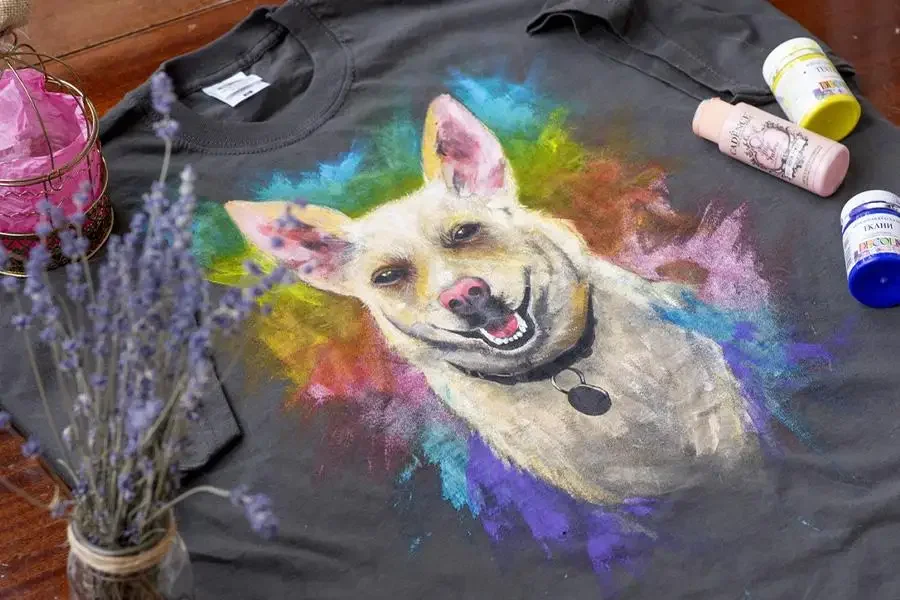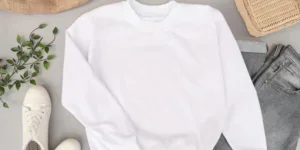The demand for creative and personalized products is on the rise. The print on demand (POD) business model is a business solution that has the potential to meet this growing market with minimal investment and low risk. There’s no need to hold inventory or invest in physical outlets. Instead, businesses can set up their inventory and start selling products with just a few clicks by starting a print on demand business.
Read on for a guide on how to turn your art or ideas into a tangible commodity, and start generating a passive income today by setting up a print on demand business.
Table of Contents
An overview of the print on demand market
8 steps to starting a print on demand business
Starting printing on demand today
FAQs
An overview of the print on demand market
Lockdown restrictions had a positive impact on this business model since people shifted to online purchasing methods. The global print on demand market size was valued at US $4.90 billion in 2021 and is expected to expand at a compound annual growth rate (CAGR) of 26.1% from 2022 to 2030.
There are now many print on demand jobs available in the market, so if you want to start your own print on demand business, here is a how-to guide to help you get started.
8 steps to starting a print on demand business
1. Initial planning
The first step to starting your POD business is to plan. Gather the essential information on industry-related topics like demands, demographics, target audience, emerging market needs, and market trends. Then, based on the collected data, structure your print on demand business ideas.
Market research should be able to answer these questions:
- What product types could best fit your art or design?
- What type of people do you want to see the product?
- Who are the people likely to buy your product?
- What would be the suitable price for the products you want to sell?
- Are there any competitors selling the same product?
2. Pick a niche

Art and artists, fitness, beauty, or even the Marvel Cinematic Universe. A niche can provide a solid target to define your clothing types and what prints you can offer. A niche is based on the idea that it is easier to grab a big part of a small market than a small part of a big market. To pick one, you can use the below tips.
- Examine best-selling products: With a simple Google search using the phrase “best selling products 2022,” you’ll come across a plethora of results to begin your research with. Digging deeper into these results will help you discover the most popular products.
- Leverage social media platforms: Use social media platforms like Pinterest, Facebook, Instagram, TikTok, or Snapchat to look for trending product posts that are gaining high engagement or interest from a wider community. For example, print on demand wallets are a popular trend that may be worth taking advantage of.
- Compare ideas on Google Trends: One of the easiest ways to identify the trend is by using Google Trends, which offers useful insights on what keywords people are mostly using to search on Google. It gives you historical trend data for a particular search phrase across different regions and languages.
- Validate your idea with SEO tools: With tools like SEMRush, Moz, and Ubersuggest, you can get better and refined insights on what people are searching for in relation to your product idea.
3. Designing
Customized and personalized products are all about the product design, and this where print on demand really excels as an approach for smaller businesses.
You don’t need to have professional skills or experience in the field of design. You can draw design inspirations from websites like Pinterest, Behance, Dribble, Disignious, Teespring, and Indiemade. Also, do not be afraid to try out your own designs and use print on demand tools on free websites like Canva.
If you are not comfortable creating your own designs, you can get help from freelance graphic designers offering their services on platforms such as Fiverr, Upwork, and Dribble.
Once you have the designs ready, the next step is to see if people really like them. For this, you can put your designs on social media platforms like Instagram, Reddit, or even Quora. These platforms can help you receive feedback and understand what is trending within the community. You can even generate print on demand business name ideas through online platforms.
4. Decide where to sell
This is an essential step toward selling the product. Either use an existing e-commerce marketplace or an e-commerce platform to develop your own website.
You can register as a seller on e-commerce marketplaces like Etsy, Printify, Redbubble, Squarespace, and Prestashop. You can list your products on these marketplaces directly and showcase your products to a vast audience. While these platforms will help you make a sale more quickly, you will also need to pay a commission fee for each sale, which may trim down your profit, especially if you’re dropshipping. Even Facebook marketplace is an option you could explore with the dropshipping model.
Several e-commerce platforms offer a drag-and-drop store builder that you can integrate into your website. You could use Shopify, WooCommerce, or Magento to build your website and use platforms such as Pinterest or TikTok for marketing. With your own website, you get better control over your online store and save commission charges. Note of caution, though, developing a website by yourself can be a demanding job, and it may not give you results immediately.
5. Work with a print on demand vendor
Your print on demand vendor provides you with a diversified range of product types. The vendor is responsible for printing and shipping your order. Besides, how the product reaches your consumer will also influence their purchasing experience and loyalty to your brand. Thus, carefully deciding on a print on demand company is critical.
These are a few things to look for while selecting a reliable print on demand supplier for your label. Your POD partner should:
- Offer large-scale and updated printing services.
- Have the capability to print on multiple product types.
- Use appropriate packaging for the items.
- Practice standardized methods for shipping and ship the order on time.
- Have a clear return policy.
The best approach is first to place a sample order with your vendor to check the product quality and shipping times.
6. Set prices and ensure quality
To set the price, you must first figure out the net cost per product, including packaging and shipping. Add a profit margin and get your selling price. Then in the next run, you adjust the prices to include the actual cost of delivering a finished product.
Also consider competition prices, and calculate the discounts or offers you might want to provide, such as free shipping. As you are not purchasing any stock in bulk, your margins might be initially low, but you can revise your pricing model at a later stage to find the most appropriate price.
7. Marketing
If you’re wondering how to promote print on demand business, strong and engaging marketing ideas will help you to build a strong connection with your audience. Initially, it is advisable to opt for inbound strategies such as blogs and social media posts meant to draw the prospects “in” by providing valuable information to them. For print on demand, this could mean pop-culture-related content in your niche with backlinks to your product pages.
Using inbound marketing, you can generate organic leads. It also trains the algorithm of popular advertising channels such as Meta ads manager to get better cost per click or CPCs later when you’re ready to advertise.
Online advertising has been simplified by social media platforms where you only need to select the target demographics and post your ads. You can even be frugal with ads and repurpose existing content. This way, your outbound marketing will be less of an effort.
8. Analysis of market response
It is good to have specific targets in mind when planning your business. You can use analysis tools such as Google Analytics, Heap, and Woopra when you’re in operation, but you can start with a few fundamental metrics. You should at least work out key statistics such as break-even point, customer acquisition cost, and customer lifetime value.
It’s always easier to sell to your existing customer rather than acquiring a new one. Therefore, make sure to determine the customer lifetime value (CLV). Filter out customers who are making repeat purchases with you and devise a strategy to make them feel special and happy with exclusive offers.
Identifying the key performance metrics will give you a fair idea of where you stand when you’re analyzing your business model using SWOT analysis–an analysis of your strengths, weaknesses, opportunities, threats–or competition analysis.
Starting printing on demand today
Print on demand offers a simple and promising business opportunity. It allows entrepreneurs and creatives to generate a decent passive income by starting an ecommerce business on a limited budget. It can also serve as an excellent starting point for someone looking to break into a full-fledged retail business by offering an opportunity for people to gain experience first before scaling up. Either way, it provides a low-cost and low-risk opportunity for those who want to start operating in the fashion retail sector.
FAQs
What is print on demand?
Print on demand is an order fulfillment method where you can start selling customized white-label products by adding your own designs to them without holding inventory. In this model, your POD vendor takes care of the printing and shipping processes.
What are the pros and cons of print on demand?
Print on-demand lets you deploy your business model quickly, with low risk and investment. On top of that, the deliveries are fulfilled by third parties, so all you really need is a computer to operate. The trade-off is that you get less control over what you sell and how you ship and gain lower margins than traditional shops.
Can I start a print on demand business for free?
In the print on demand process, you do not have to pay for the product until you make a sale. Hence, you can start with a nominal investment that often goes into setting up a shop online. There are many print on demand tips and tricks online that are helpful for beginners.
Is print on demand profitable?
Yes, with well-calculated retail prices and profit margins and an effective marketing strategy, starting a print on demand business can make you a decent side income.
What are the best print on demand products to sell?
A list of the most desirable and popular print on demand products includes unisex tees, jewelry pieces, posters, mugs, tote bags, and so on. Even print on demand pajamas are becoming profitable.
What’s the difference between dropshipping and print on demand?
The key difference is that print on demand has a space to customize the product while drop shipping is just sourcing and selling the item from places such as t-shirt fulfillment companies.




